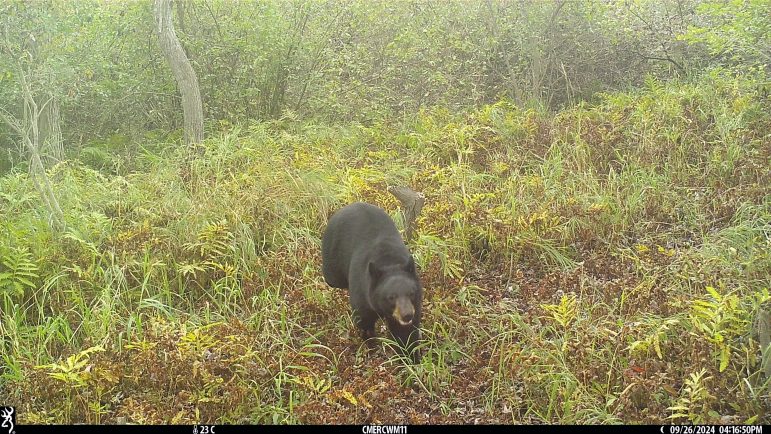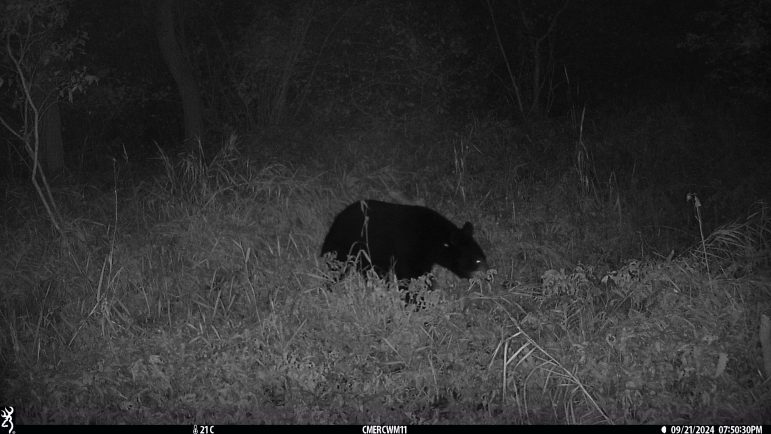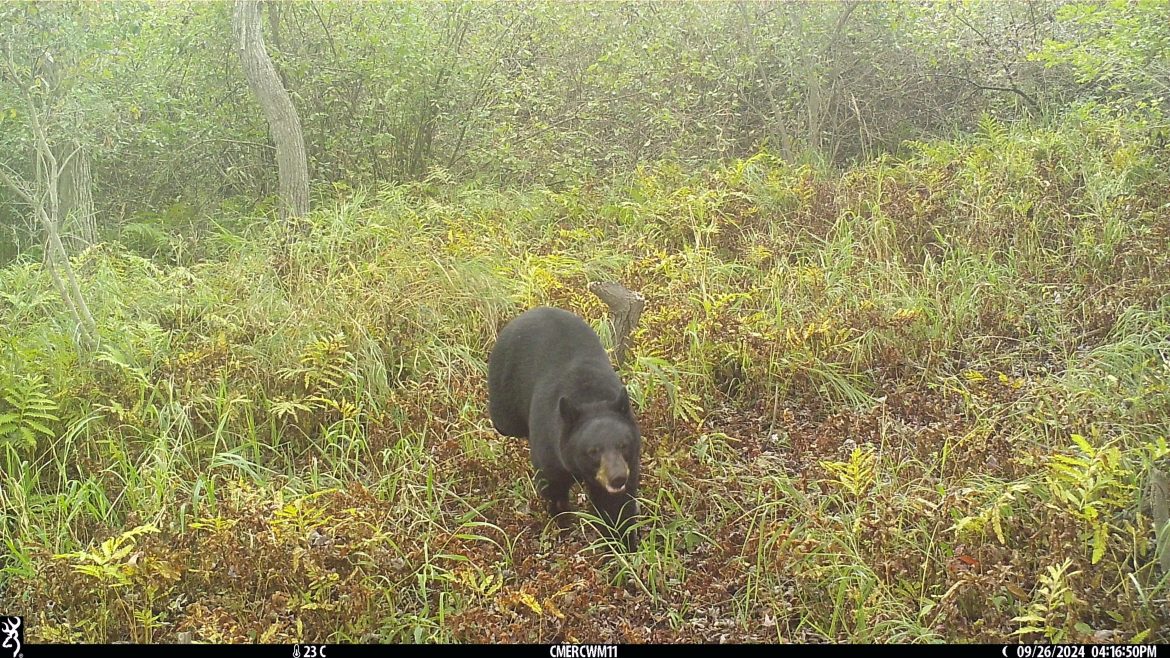
By Gray Longcore
“There’s bears here?”
That was a common response this spring to the first public display of photos of a black bear taken from trail cameras just a half-hour drive from downtown Lansing.
The bear was photographed over the course of two months in summer 2024 at Michigan State University’s Corey Marsh Ecological Research Center in southeast Clinton County.
These photos, shown for the first time at an April 26 event at the research center, line up with a bear sighting reported nearby in Bath township last summer. These sightings are part of a recent southward push of black bears in Michigan. The state Department of Natural Resources has found a 37% increase in the number of bears in the lower peninsula since 2012.
The photos from last year remained undiscovered on the remote cameras until Jen Owen, the research center’s director, checked the devices early this April.
“Seeing a bear on a camera is sort of confirmation that that’s what we should be doing,” said Owen, an associate professor in MSU’s Department of Fisheries and Wildlife. “We should be monitoring wildlife through these trail cameras because we would never have known that otherwise.”
Around 80% of Michigan’s bear population is found in the Upper Peninsula, said Cody Norton, a DNR bear biologist. But black bears have been increasingly moving further south in the past 10-15 years.
“When we see bears showing up in areas where there aren’t many bears—dispersing out, colonizing new areas—generally juvenile males are going to be the first thing to show up,” he said.
Young bears will go in search of their own territory after spending a year in the den with their mothers. They can disperse quite far, but will only stick around if they find food and a mate. Bears generally occupy large territories to provide them with ample food year-round: around 18 square miles for females and upwards of 80 square miles for males.
Black bears require forest habitat and typically prefer upland coniferous and deciduous stands, Norton said. But in the Lower Peninsula, they’ve been observed in lowland swamp habitat like Corey Marsh, he said.

Based on its size and proportions, Norton believes the bear seen at Corey Marsh is likely a juvenile searching for territory.
Although bears are becoming common in the northern Lower Peninsula, Norton said Clinton County is especially far south. More populated areas like Traverse City are seeing increased conflict as bears become more established in the northern lower peninsula.
There were no conflicts between the bear and researchers or their equipment during the two months it was photographed. Bears are adept at avoiding people and conflicts usually only arise from bears seeking out human food sources, Norton said.
The DNR is conducting research on human-bear conflicts, particularly in the northern lower peninsula around Ludington, Norton said.
Owen hopes that by checking the rest of the photos from last summer, students will be able to determine if the bear stuck around.
Corey Marsh researchers and students launched the camera project in 2023 to document wildlife, particularly mammals. There were already projects focusing on birds, reptiles and amphibians, and trail cameras are particularly useful for monitoring mammals because they are much easier to see on camera
The cameras can be left out for months at a time and will take a burst of photos when an animal passes in front of the motion detector. In two years, students have observed bobcats, coyotes, otters, and now a black bear.
For Owen and the undergraduate students working at the marsh, photographing the bear is proof that the work they are doing is important.
“To me it shows that Corey Marsh is part of a matrix, part of a larger area that really does seem to be an oasis,” Owen said. “Seeing a bear just provides evidence that we do have a rich wildlife community.”
